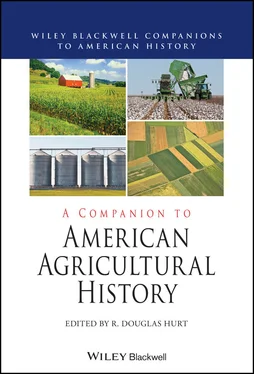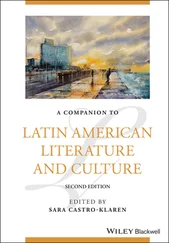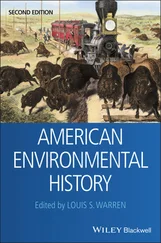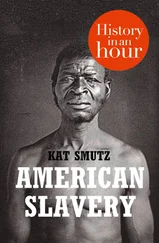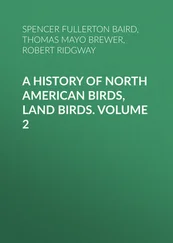David Vaughtis Professor of History at Texas A&M University. He is the author of Cultivating California: Growers, Specialty Crops, and Labor, 1875–1920 (1999); After the Gold Rush: Tarnished Dreams in the Sacramento Valley (2007); and The Farmers’ Game: Baseball in Rural America (2013) . His most recent book is Spitter: Baseball’s Notorious Gaylord Perry (2022). He also has published Teaching the Big Class: Advice From a History Colleague (2011). Vaught is past president of the Agricultural History Society and serves currently as an Organization of American Historians Distinguished Lecturer.
Wilson J. Warrenis Professor of History at Western Michigan University where he teaches courses in modern United States history, including food history, as well as history and social studies education. He has published three monographs dealing with meatpacking: Struggling with “Iowa’s Pride”: Labor Relations, Unionism, and Politics in the Rural Midwest since 1877 (2000), Tied to the Great Packing Machine: The Midwest and Meatpacking (2007), and Meat Makes People Powerful: A Global History of the Modern Era (2018).
Albert G. Wayis an Associate Professor of History at Kennesaw State University. He has published widely on the environmental and agricultural history of the US South, including Conserving Southern Longleaf: Herbert Stoddard and the Rise of Ecological Land Management (2011), and he is the editor of Agricultural History .
Jeannie Whayneis University Professor of History at the University of Arkansas and author of Delta Empire: Lee Wilson and the Transformation of Agriculture in the New South (2011) and A New Plantation South: Land, Labor, and Federal Favor (1996). Delta Empire won the Arkansas Historical Association’s Ragsdale Award. She is the editor or a co-author of nine other books, including Shadows Over Sunnyside: An Arkansas Plantation in Transition (1993). Whayne, a Fellow of the Agricultural History Society, served as the Society’s president (2013 – 2014) and was awarded its Gladys L. Baker Lifetime Achievement Award in 2017.
Introduction THE HISTORY OF AMERICAN AGRICULTURE
R. Douglas Hurt
The history of American agriculture is the story of its people – Native American, European immigrant, native born, African American, Latinx, and Asian, among others. It is a story of considerable achievement in many contexts, such as the formulation of land and water law, crop and livestock production, and technological and scientific change. The history of American agriculture also is reflected in art, literature, music, and film. It is the story of national expansion, political turmoil, and changing relationships among men, women, and children. It is the story of hard-earned economic gains and the indelible imprint of heartbreak, violence, racism, and despair. The history of American agriculture includes life in the small towns and cities where food processing links workers with the countryside. It is the story of agribusiness in a multiplicity of forms including domestic and international trade. It is the story of contentious government policy that provides nutritional programs for school children and the disadvantaged contending with food insecurity. It is the story of inequitable federal production and income programs and well-intentioned and often successful conservation and environmental programs that benefit urban and rural America. The history of American agriculture is complex with many parts, the synthesis of which enables us to better understand the American experience.
The contributors to this book constitute a gathering of emerging and established scholars who have written accessible and astute chapters on a multiplicity of topics to provide readers with an introduction to their subject. Each chapter offers readers a place to begin their own pursuit of American agricultural history, whether in general or regarding the subject under consideration. The following collection of thirty-one original chapters and an extensive bibliography will enable readers to gain an understanding of American agricultural history across region and time as well as focus on specific subjects, themes, and issues. In the past, many scholars who have written about the topics in this collection analyzed political, social, and economic events to give their histories substance, form, and meaning. In the twenty-first century these subjects often are understood through new interdisciplinary lenses of race, class, and gender as well as the environment that give greater breadth and depth to our understanding of America’s agricultural past.
The contents of these chapters begin in 8000 bce and range to the third decade of the twenty-first century. Specifically, they provide a narrative summary and a critical examination of the historical works upon which the authors have based their assessments. Each chapter will prove suggestive for further reading and research. By so doing, the chapters offer a comprehensive overview of critical areas in American agricultural history and, as such, will be useful for introductory students, experienced scholars, and general readers as well as teachers, journalists, public officials, and policy-makers who want a brief survey of specific topics in field-defining chapters in American agricultural history.
These chapters are informative, challenging, and interpretive. Several touch on similar subjects but provide different points of view. Others offer analysis of newly developing areas for research, such as the arts, urban and organic farming, and the environment. Still others assess the gendered nature of American agriculture, as well as matters of race, ethnicity, and power, and still others delve into the world of agribusiness from the meatpacking plants to migrant labor to the marketing of new products, including foods, at home and abroad. Others trace the origin and development of agricultural politics and policies, while others describe changes in science, technology, and government regulations.
We hope that this book will provide a succinct and solid foundation for understanding American agricultural history and offer new insights and fresh, innovative directions and ideas for further research. It is, of course, a superb reference volume for the topics discussed. Moreover, this collection provides an assessment of nearly a century of scholarship written by historians, political scientists, economists, geographers, anthropologists, sociologists, and environmentalists, among others, to constitute a book of chapters that is foundational to the study of American agricultural history.
It has been my privilege to have been invited to organize this collection of chapters and to work with these talented scholars from many disciplines to provide a usable book on the history of American agriculture. Although I would have liked to include additional subjects, any substantive omissions only prove that the field is complex, wide-ranging, and ever expansive. New topics for research and writing are limited only by the imagination, skill, and knowledge of anyone interested in America’s agricultural past. I am confident that these chapters will provide a usable, accessible, and suggestive reference for anyone desiring to learn about American agricultural history. More importantly, I hope this book will enable all readers to understand the integral importance of our agricultural past to the American experience.
Part I REGIONAL
Chapter 1 NATIVE AMERICAN AGRICULTURE BEFORE EUROPEAN CONTACT
Gayle Fritz
The history of food production in North America before European contact is deep and diverse, with traditions that vary geographically and culturally. Archaeologists, historians, geographers, botanists, and agronomists have studied pre-Columbian agriculture for more than a century, and it remains a widely discussed topic in textbooks and scholarly publications. Members of the general public are also intrigued by information about past Native American farming. These studies, after all, reveal where some of our foods came from and how people grew crops in challenging environments without metal tools or modern mechanical devices. The past might even hold clues to help us cope with issues such as climate change and to explore alternative methods to the low-diversity, high-energy input systems practiced by most American farmers today.
Читать дальше
